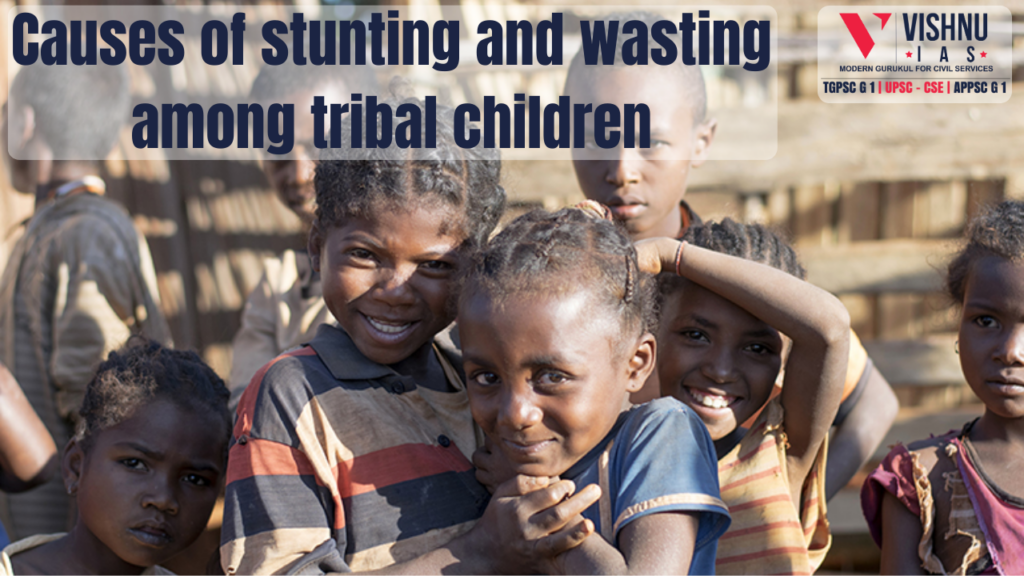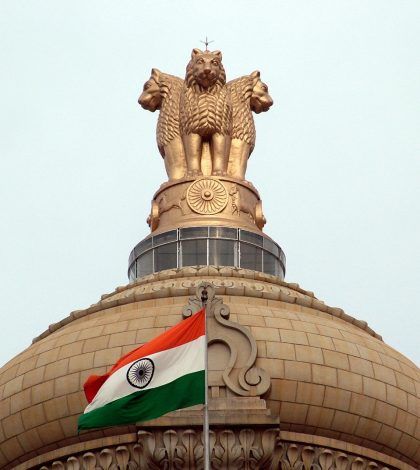Causes of stunting and wasting among tribal children
Approach
- Introduction: add few reasons responsible in few lines
- Body: add the comprehensive analysis Causes of stunting and wasting among tribal children and add how it can be addressed
- Conclusion: add its contemporary relevance
INTRODUCTION
Stunting and wasting are significant public health issues among tribal children, particularly in India.
BODY
Causes of Stunting and Wasting Among Tribal Children
Stunting and wasting among tribal children are complex issues influenced by various interrelated factors:
- Poor Nutrition:Limited access to diverse and nutritious food is a significant cause. Tribal communities often face economic constraints and geographical isolation, which restrict their ability to obtain a balanced diet.
- Infections and Diseases: Frequent infections, such as diarrhoea and respiratory illnesses, can lead to malnutrition by reducing nutrient absorption and increasing nutrient requirements.
- Maternal Health and Nutrition:Poor maternal health and nutrition during pregnancy can result in low birth weight and subsequent growth issues in children. Factors such as maternal education and age at first birth also play crucial roles.
- Socioeconomic Factors:Low household income, lack of education, and poor living conditions contribute significantly. These factors limit access to healthcare, clean water, and sanitation, exacerbating malnutrition.
- Cultural Practices: Certain cultural beliefs and practices related to child feeding and care can negatively impact nutritional status. For example, early cessation of breastfeeding or inadequate complementary feeding practices.
Addressing Stunting and Wasting
To effectively address these issues, a multifaceted approach is required:
- Improving Nutrition:
- Supplementary Feeding Programs: Implementing programs that provide nutrient-rich foods to children and pregnant women can help improve dietary intake.
- Nutrition Education: Educating communities about the importance of a balanced diet and proper feeding practices is crucial.
- Healthcare Access:
- Regular Health Check-ups: Ensuring regular health check-ups and timely treatment of infections can prevent the exacerbation of malnutrition.
- Maternal Health Services: Providing comprehensive maternal health services, including prenatal and postnatal care, can improve outcomes for both mothers and children.
- Socioeconomic Interventions:
- Income Support Programs: Initiatives like cash transfers or employment schemes can help improve household income, enabling better access to food and healthcare.
- Education and Awareness: Enhancing education, particularly for women, can lead to better health and nutrition practices.
- Water, Sanitation, and Hygiene (WASH):
- Clean Water Access: Ensuring access to clean drinking water and promoting good hygiene practices can reduce the incidence of infections.
- Sanitation Facilities: Building and maintaining proper sanitation facilities can significantly reduce the spread of diseases.
- Community Engagement:
- Involving Local Leaders: Engaging community leaders in health and nutrition programs can help in spreading awareness and ensuring community participation.
- Culturally Sensitive Approaches: Tailoring interventions to respect and incorporate local cultural practices can enhance their acceptance and effectiveness.
Addressing stunting and wasting among tribal children requires a holistic approach that combines nutrition, healthcare, socioeconomic support, and community engagement. By tackling these issues from multiple angles, it is possible to make significant strides in improving the health and development of tribal children.
Anthropology Full Course at Vishnu IAS Academy
What does Course Offer?
- 4 Months (250+ Class Hours)
- Online (App + Web) / Offline / Hybrid Mode of Classes
- Live + Recorded Videos Access For 1 Year
- 2 Hour Live Class From Monday to Saturday (1.5 Hours for Class + ½ Hour for Doubt Solving)
- Foundation to Advanced Level of Teaching
- Simple and Integrated Content
- One Stop Solution Books
- Regular Value Added Content
- Current Affairs & Case Studies Modules
- Daily Answer Writing Practice
- Weekly Grand Tests On Sundays & Evaluation With Guidance and Topper Will be Rewarded
- 500+ Model Answers
- 9 AM – 9 PM Support System
- Free GS Current Affairs
- Free Interview Guidance for Anthropology
Here at Vishnu IAS, we provide a comprehensive coverage of Complete Anthropology Syllabus For UPSC Preparation so that students function with the clarity needed to navigate the course of optional preparation for scoring 300+ marks.


